The aviation industry is going to surprise everyone in the coming future with newer ways to roam around the skies. The battery-powered all-electric plane is now a reality and not a dream. The world’s first commercial electric aircraft looks like a Tesla floating in the sky.
The idea of electric planes has long been a pipe dream for the aviation industry and its customers. It’s undoubtedly on its way — but not on a faster course, as many people had predicted. Robert Llewellyn showcases the latest upgrade in renewable tech in a video on his YouTube channel, Fully Charged Show.
The concept of using electric energy to commercially fly is long under research as several tech giants are striving to reach success. Robert defies the odds to be able to ride in one of the first commercial planes with certification for use. The electric plane is made by a Slovenian aviation manufacturer Pipistrel.
How Did The Flight Go
The video begins with Robert sitting around in the lounge, and the attendant comes saying Mr. Llewellyn, your plane is waiting for you. The beginning itself gives an idea of how this futuristic idea has now become the reality with a certified commercial all-electric airplane.
Robert mentions that more than a decade earlier he thought of cars, buses, bikes, boats, etcetera to be a more feasible implementation of electric vehicles. Having a fully functional electric-powered aircraft never came up in his mind.
The aircraft Velis Electro is designed and manufactured by the Pipistrel Aviation company and is the only aircraft in the world that has been certified. Many aviation schools around the world are buying Pipistrel aircraft for training the new pilots in their schools so they could effectively reduce their carbon footprints.
Deepak Mahajan, head of aviation of an aviation school, gives more information about the aircraft saying the controls of the aircraft are similar to the ones of a standard piston-powered light plane. He goes on to compare the difference similar to the distinction between ICE vehicles and electric vehicles.
Robert and Deepak take off in the aircraft in windy weather of 20 knots speed gushing the aircraft. The take-off does seem a bit rocky and Robert even adds that he would want to hold on to his seatbelts for a while. However, he does mention how the big window-styled glass doors give great visibility from the cockpit of the aircraft.
Deepak explains the transition into electric aircraft with Velis looks promising and revolutionary. He says the standard aircraft with 100 horsepower would weigh 70kgs. Velis weighs 70 kgs, and about 12kgs are added by its motor. Therefore, the mass ratio is similar to that of piston-powered aircraft.
Velis took off with a 97 percent charge, and it was 87 even after using significant energy for take-off. Robert says he found the take-off and flight to be incredibly low on noise. He also adds that the battery takes very less time to charge, roughly one or one and a half hours’ time.
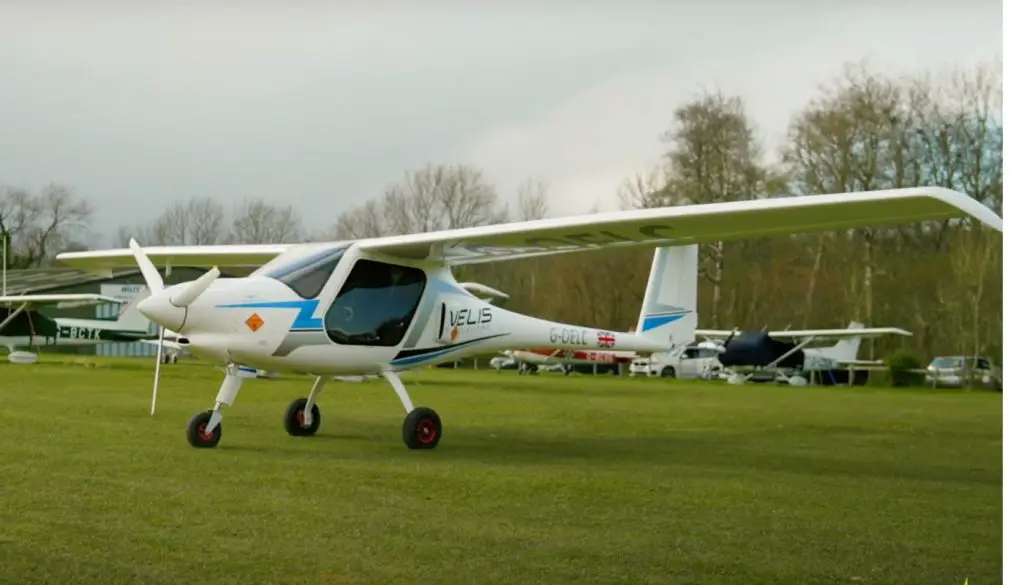
Specifications And Features
Velis Electro is a phenomenal aircraft with two seats that have been given a certification by European Union Aviation Safety Agency. The certification allows Velis Electro to be used commercially, as the pilot can use the aircraft to commercially operate. The small compact design makes it perfect for use as a training aircraft for new pilots.
The design is quite compact and futuristic giving a notion of tiny aircraft but packing up just enough power. The name Velis means “sail” in Latin. The name perfectly suits the nature of the aircraft as Velis is going to be quieter as compared to standard aircraft of light capacity.
One person is enough to turn the compact aircraft by grabbing the tail of the craft slashing the need for a three-point turn. Velis weighs only about 428kg as the construction is done in carbon fiber. The wingspan of the two-seater Velis is about 10.71m.
The aircraft is designed with two liquid-cooled battery packs that yield a combined capacity of about 24.8 kWh. The battery packs are located in the front and one just behind the seats. Both battery packs are designed in such a way that the aircraft can run on one battery pack when needed. Moreover, the aircraft packs a parachute too, in case the battery packs run out of charge or there is any need for emergency landing gear.
Both batteries so give a less range on them, but the chances of having a powertrain issue with Velis is unlikely. The electric aircraft uses very few moving parts as compared to the combustion engines of traditional aircraft.
Talking about the power the Velis can give out up to 76 bhp with its electric motor mounted in the nose. This power is enough to reach a cruising speed of about 90 knots in the air going up to 108 knots also.
Velis Electro is currently priced at 202,000 euros, which is similar to piston-powered aircraft. The electric aircraft can run for about 80-90 miles on one charge depending on the wind and other conditions.
What To Expect In The Future?
The future of aviation looks extremely bright with the launch of more advanced and feature-rich electric aircraft. Velis Electro presents a similar hope with its impressive power pack featuring two seats and 80-90 miles on one charge.
According to Deepak Mahajan, there is a need to expand the electric power charging network across the airfields. He even suggests an enhanced awareness of renewable energy and different ways to charge these electric planes.
Robert sums up the video by announcing how brilliant the electric airplane is and how incredible the flight has been for him. We can expect such electric airplanes to be more advanced in the future with extended range on them and have more space inside. Bigger electric vehicle companies like Tesla should take the cue and work on the projects to roll out something substantial.

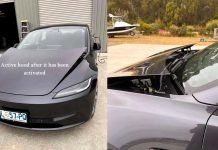


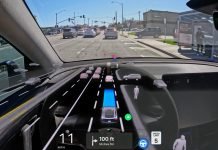
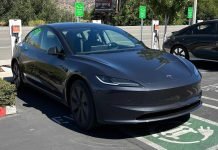









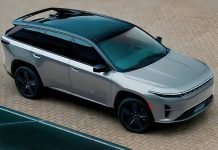


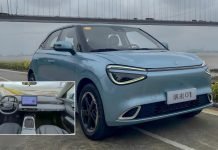
I was really disappointed, I emailed the company checked the price of training – £245 / per hour!. I would like that to be confirmed by someone who’s actually training in one. It seems incredibly high considering it’s costing around £8 to charge.
One article I read quoted £150 per hour that much more reasonable
For £200 per hour at Denham you can train a two seat C152 .
Considering the the running costs are a fraction on a Avgas powered aircraft , its costing a lot more to learn to fly. Obviously the lease price of the aircraft are so high they need to charge that.
Also the 10 hours solo time will be frustrating probably flying no more than 35 to 45 min at time it will cost extra time and money in taxi time having to do nearly double the flights to make up the 10 hours .
I can’t see flying will be that enjoyable if you want explore the local area when range anxiety will be on your mind. Having once owned an electric car for a year I got know range anxiety few times due to faulty chargers or just a queue of EV’s , and at the same time enviously looking at nearly empty a Tesla chargers on some service stations.
Then there is the qualifying X country flight , that will have to be done in a in a gas powered aircraft which will require an hour or two checkout , to ensure engine handling , carb heat , mixture control etc is understood.
As much as I love the idea of an electric aircraft , battery density and the sheer cost of the batteries , it doesn’t make economic sense – yet . On the horizon new batteries look very promising, or even the new solid hydrogen fuel cells would solve the problem , who knows what may appear in the near future that would be more efficient and cheaper .
I had PPL-A 7 years ago until a stroke took that privilege away. Fortunately I found I could fly a C42 microlight with my disability ( throttle between the legs made it easier to reach with my partial disabled left arm/ hand and have recently passed the GST and about to get a NPPL-M. An electric aircraft would definitely be an advantage for me.
Have owned several homebuit aircraft over the 30 years engines , fuel systems , reliability and cost of maintenance and repair was the major headache.
I was hoping the price will would be around £150 an hour, as one article indicated but even that is more expensive than a C42 ( £137 a per hour ) An electric aircraft would even better suit my disabilities, it’s a shame I really had high hopes this would be the future , but it’s not quite there yet. I wish them well .